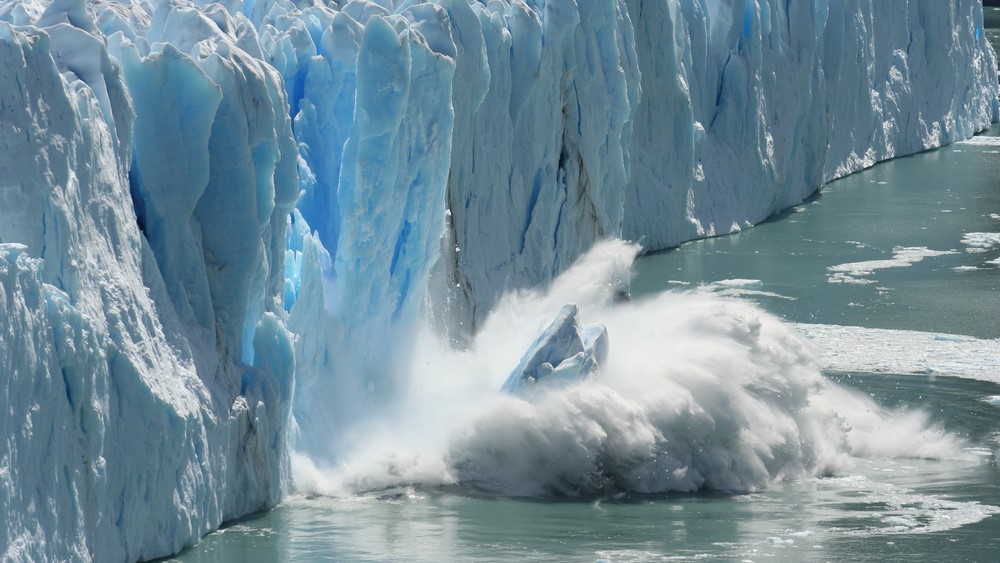Alarming heat waves hit Arctic and Antarctica at the same time
Temperatures peaked at least 50 degrees higher than average in both polar regions.

Both of Earth's polar regions recently experienced unprecedented simultaneous heat waves that caused temperatures to briefly skyrocket to never-before-seen heights in some areas. While experts say such extreme temperatures cannot be solely attributed to climate change, the unusual phenomenon is nonetheless "dramatic" and "alarming."
In Antarctica on Friday (March 18), the average temperature was 8.6 degrees Fahrenheit (4.8 degrees Celsius) warmer than average, according to the Associated Press (AP). The highest recorded temperature was 44.6 F (7 C) at the coastal Zucchelli Station on Terra Nova Bay. The biggest temperature difference was recorded at Concordia Research Station, located more than 10,000 feet (3,000 m) above sea level, where researchers measured a peak temperature of 10 F minus 12.2 C), which is 70 F (nearly 40 C) above the seasonal average at the station. Elsewhere, at the Russian Vostok Station — which in 1983 experienced the world's lowest recorded temperature at minus128.6 F ( minus 89.2 C) — the temperature was 0 F (minus 17.7 C), beating the all-time highest temperature at Vostok by 27 F (15 C), according to AP.
In the Arctic, the average temperature on the same day was 6 F (3.3 C) higher than normal, and in certain areas near the North Pole temperatures rose by 50 F (30 C) above normal, according to AP. Experts say that temperatures in Antarctica should already have returned to normal, The Washington Post reported on March 18, but it is unclear exactly when the high temperatures in the Arctic will break.
It is very uncommon to see high temperatures across both polar regions at the same time because they have contrasting seasons; as spring arrives in the Northern Hemisphere, the Arctic is just starting to thaw while Antarctica is beginning to freeze after months of summer melt. "You don't see the north and the south [poles] both melting at the same time," Walt Meier, a senior researcher at the National Snow and Ice Data Center in Boulder, Colorado, told AP. "It's definitely an unusual occurrence."
Related: 10 signs that Earth's climate is off the rails
Scientists are particularly surprised by the heat wave in Antarctica because temperatures there have remained more stable overall compared with the Arctic, which is warming three times faster than the rest of the planet, according to a report published in 2021 by the Arctic Monitoring and Assessment Programme.
Antarctica's heat wave is most likely the result of an atmospheric river, a narrow corridor of water vapor that moves through the sky. Moisture likely moved over Antarctica and was then trapped by a "heat dome," or nearby high-pressure system, which locked the moisture in place for almost a week and heated up the air, according to The Washington Post.
Sign up for the Live Science daily newsletter now
Get the world’s most fascinating discoveries delivered straight to your inbox.

"This moisture is the reason why the temperatures have gotten just so high," Jonathan Wille, a polar meteorologist at the Grenobles Alpes University in France, told The Washington Post. "This is not something we've seen before." It is likely that certain areas of Antarctica that do not usually melt may have experienced melting for the first time because of the heat wave, he added.
The heat wave in the Arctic is less surprising: A study published Dec. 6, 2021, in the journal Geophysical Research Letters, revealed that Arctic heat waves are becoming more frequent, long-lasting and widespread.
Individual extreme weather phenomena are difficult to attribute directly to climate change. However, experts predict that such events will become more frequent and extreme in the future if current greenhouse gas emissions are not drastically reduced. "The warming of the Arctic and Antarctic is cause for concern, and the increase in extreme weather events — of which these are an example — is a cause for concern as well," Michael Mann, a climatologist at The Pennsylvania State University, told The Guardian. "The models have done a good job projecting the overall warming, but we've argued that extreme events are exceeding model projections. These events drive home the urgency of action."
On Feb. 25, Antarctica's sea-ice extent — the surface area of the sea covered in ice — reached its lowest since records began in 1979, Live Science previously reported.
Originally published on Live Science.

Harry is a U.K.-based senior staff writer at Live Science. He studied marine biology at the University of Exeter before training to become a journalist. He covers a wide range of topics including space exploration, planetary science, space weather, climate change, animal behavior and paleontology. His recent work on the solar maximum won "best space submission" at the 2024 Aerospace Media Awards and was shortlisted in the "top scoop" category at the NCTJ Awards for Excellence in 2023. He also writes Live Science's weekly Earth from space series.










